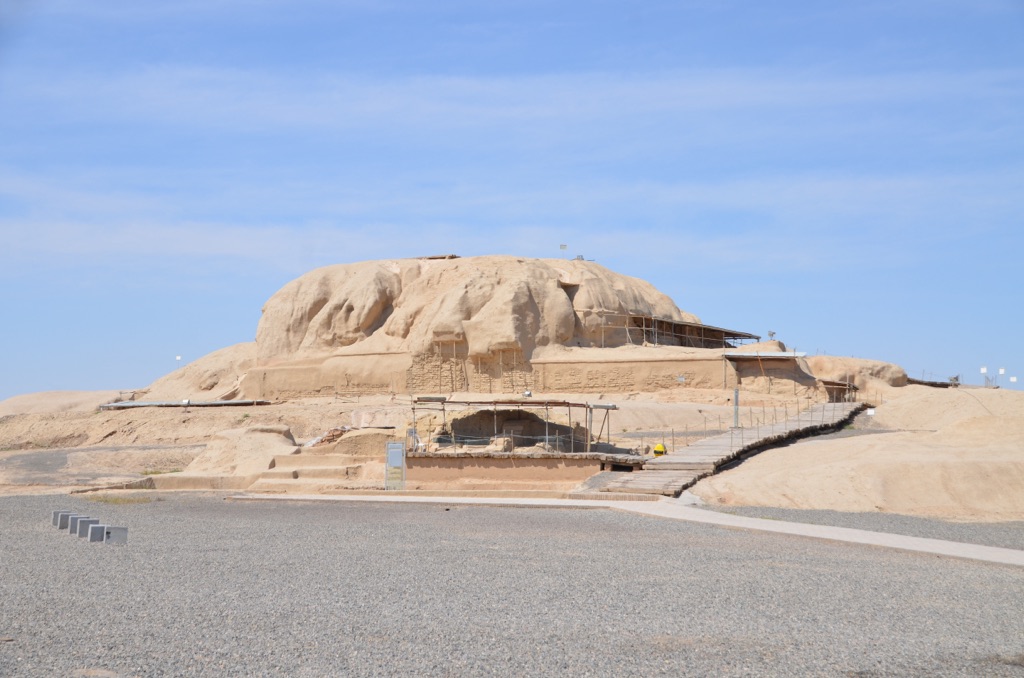The Tepe Sialk ziggurat stands as a testament to the architectural ingenuity of ancient civilizations. Located in modern-day Iran, this ancient structure is a remnant of the once-thriving Elamite civilization. The ziggurat’s ruins hint at a complex society with advanced knowledge of building techniques. Over time, it has sparked the curiosity of historians and archaeologists alike, eager to unravel its mysteries and the stories of the people who built it.
Get your dose of History via Email
Historical Background of Tepe Sialk Ziggurat
Tepe Sialk ziggurat, a prehistoric site, was first unearthed in the 1930s by Roman Ghirshman, a French archaeologist. Its construction dates back to approximately 3000 BC, during the Elamite period. The ziggurat’s core purpose remains a subject of debate, but it likely served as a religious center. Over the centuries, it witnessed various inhabitants, including the Persians, who may have used the site for their own religious practices. The ziggurat’s historical significance is further underscored by its survival through several millennia, offering a window into ancient human civilization.
The builders of Tepe Sialk were the Elamites, an ancient civilization that flourished in what is now southwestern Iran. They were known for their contributions to art and culture in the region. The ziggurat itself is a reflection of their architectural prowess. Although the Elamites were the original builders, the site later saw occupation by other groups, including the Achaemenid Persians. This transition of inhabitants adds layers to the site’s historical narrative.
Tepe Sialk ziggurat has not been the scene of any known historically significant events. However, its existence provides valuable insights into the religious and social structures of the time. The site’s longevity and continued use by successive cultures underscore its importance in the region’s history. It stands as a silent witness to the evolution of human society in ancient Iran.
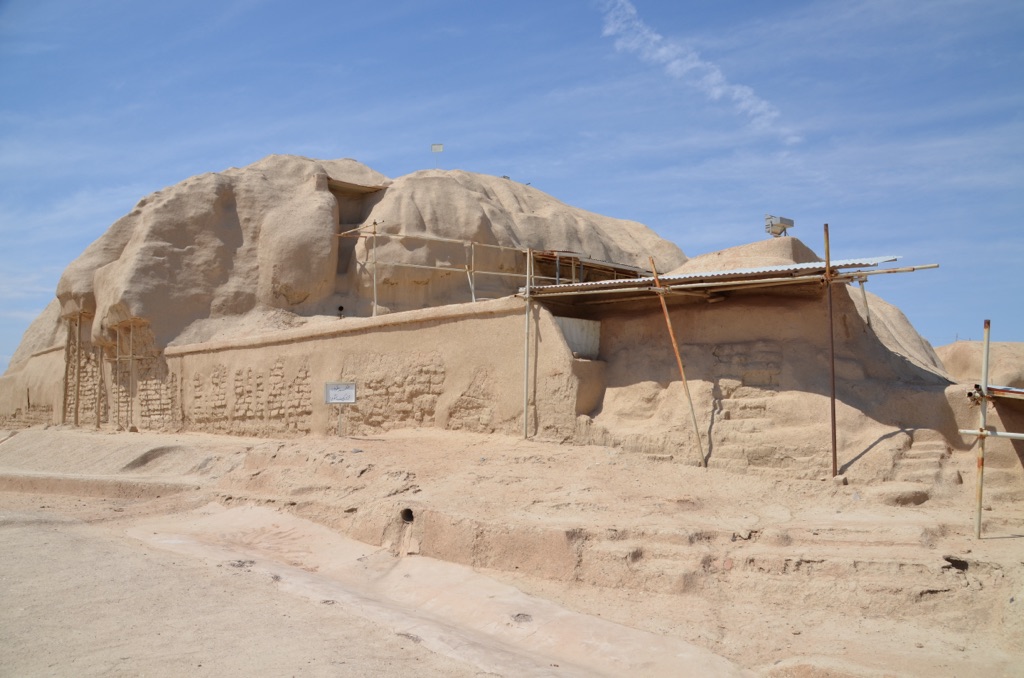
The discovery of the ziggurat has allowed historians to piece together aspects of Elamite culture and religion. The site’s excavation has yielded numerous artifacts, including pottery and tools, which offer clues about the daily lives of its inhabitants. These findings have been crucial in understanding the broader context of the Elamite civilization and its interactions with neighboring cultures.
Despite its ruinous state, Tepe Sialk ziggurat continues to be an important archaeological site. Its discovery and subsequent studies have significantly contributed to our knowledge of ancient Near Eastern civilizations. The site remains a focal point for research, with ongoing excavations and studies aimed at uncovering more about its past and the people who built it.
About Tepe Sialk Ziggurat
The Tepe Sialk ziggurat, now a mound of earth and remnants of structures, was once a towering edifice. It was built using mud bricks, a common construction material in the region due to its availability and durability. The ziggurat’s design followed a step-like formation, typical of such structures, intended to bring the temple closer to the heavens.
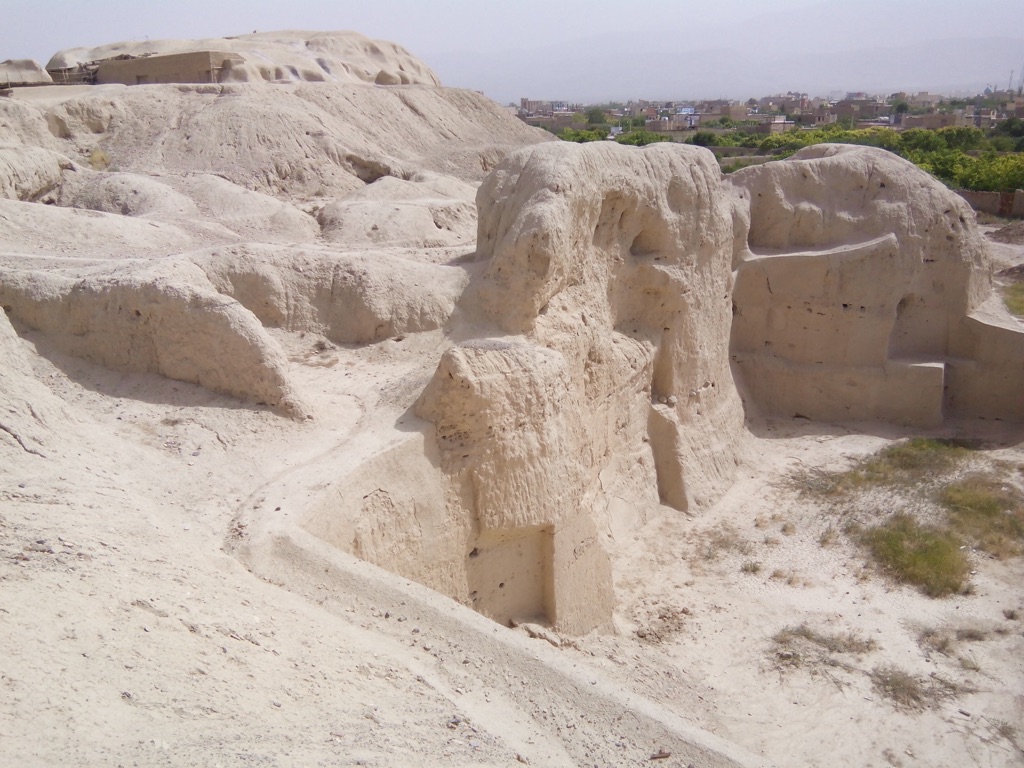
Architecturally, the ziggurat was a marvel of its time. Its base measured approximately 60 meters on each side, and it rose to a significant height, though the exact original height is unknown due to its current state. The structure was likely adorned with vibrant colors and decorations, as was customary for religious buildings of the period.
The construction methods of the Tepe Sialk ziggurat reflect the advanced engineering skills of the Elamites. They employed techniques to ensure the stability and longevity of the structure, which has allowed it to survive in some form for thousands of years. The use of mud bricks also indicates an understanding of materials that could withstand the harsh climate of the region.
One of the architectural highlights of the ziggurat is its terraced levels, which would have been accessed via ramps or staircases. These levels likely served as platforms for religious ceremonies and may have housed altars or shrines. The precise layout of the terraces and the nature of the ceremonies remain subjects of research and interpretation.
Today, the ruins of the Tepe Sialk ziggurat provide a glimpse into the grandeur of ancient Elamite architecture. The site continues to be an important focus for archaeological study, as it holds the potential to reveal more about the construction techniques and architectural preferences of the Elamites and their successors.
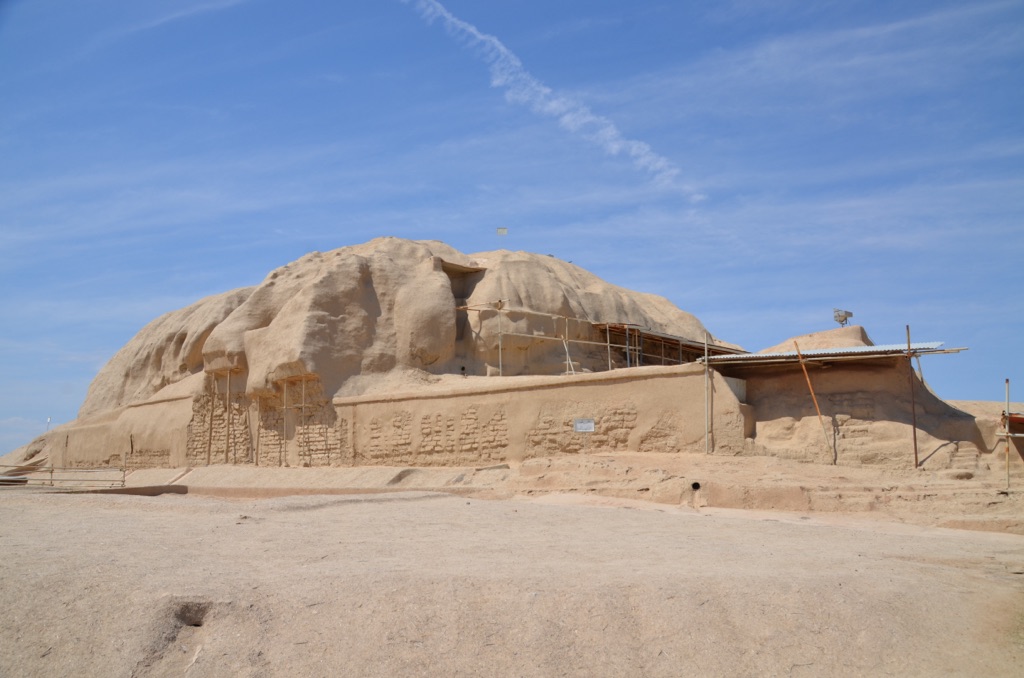
Theories and Interpretations
Several theories have emerged regarding the purpose of the Tepe Sialk ziggurat. Most scholars agree that it served a religious function, possibly as a temple or a place of worship. The ziggurat’s elevated platform suggests it was a bridge between the earth and the divine, a common belief in Mesopotamian religions.
There are mysteries surrounding the ziggurat, particularly concerning the specifics of the rituals performed there. Some hypothesize that it was a site for offerings to the gods or for celestial observations. These interpretations are based on comparisons with other ziggurats in the region, which had similar uses.
The alignment and design of the ziggurat have led to theories about its astronomical significance. Researchers have proposed that the structure could have been aligned with celestial bodies, serving as an ancient observatory. However, definitive evidence to support this remains elusive.
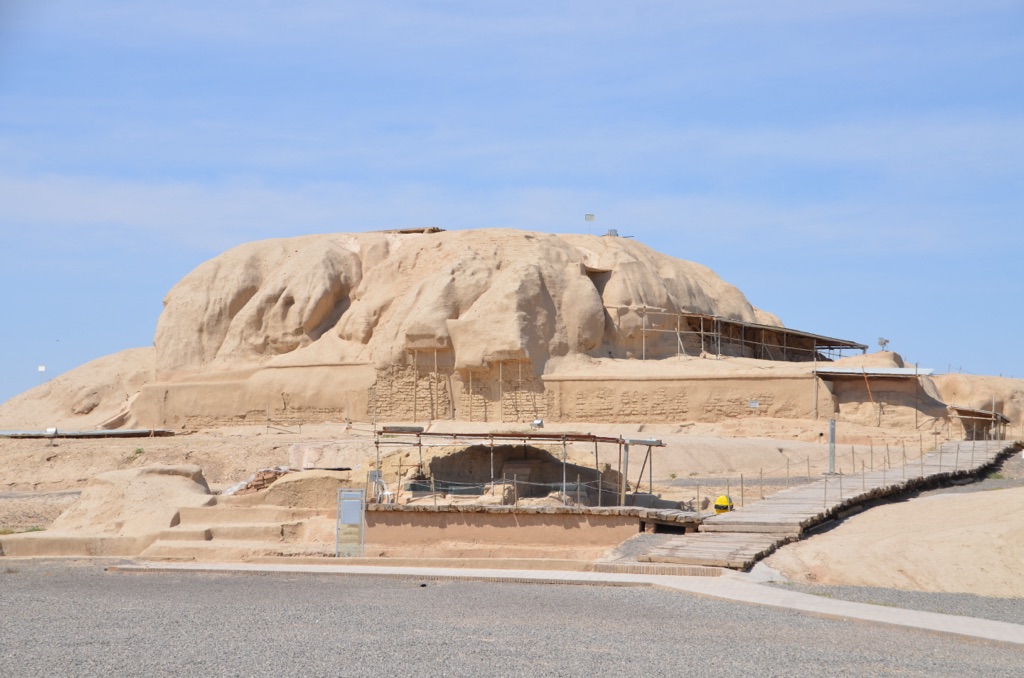
Historical records from the period are scarce, making it challenging to match the ziggurat with specific events or practices. Much of what is known comes from archaeological findings, which provide indirect clues. As such, interpretations of the site’s use are continually refined as new discoveries are made.
Dating of the Tepe Sialk ziggurat has been carried out using various methods, including stratigraphy and radiocarbon dating. These techniques have helped establish a timeline for the construction and use of the site, although there is still some debate among scholars regarding the exact dates.
At a glance
Country: Iran
Civilization: Elamite
Age: Approximately 5000 years old (circa 3000 BC)

